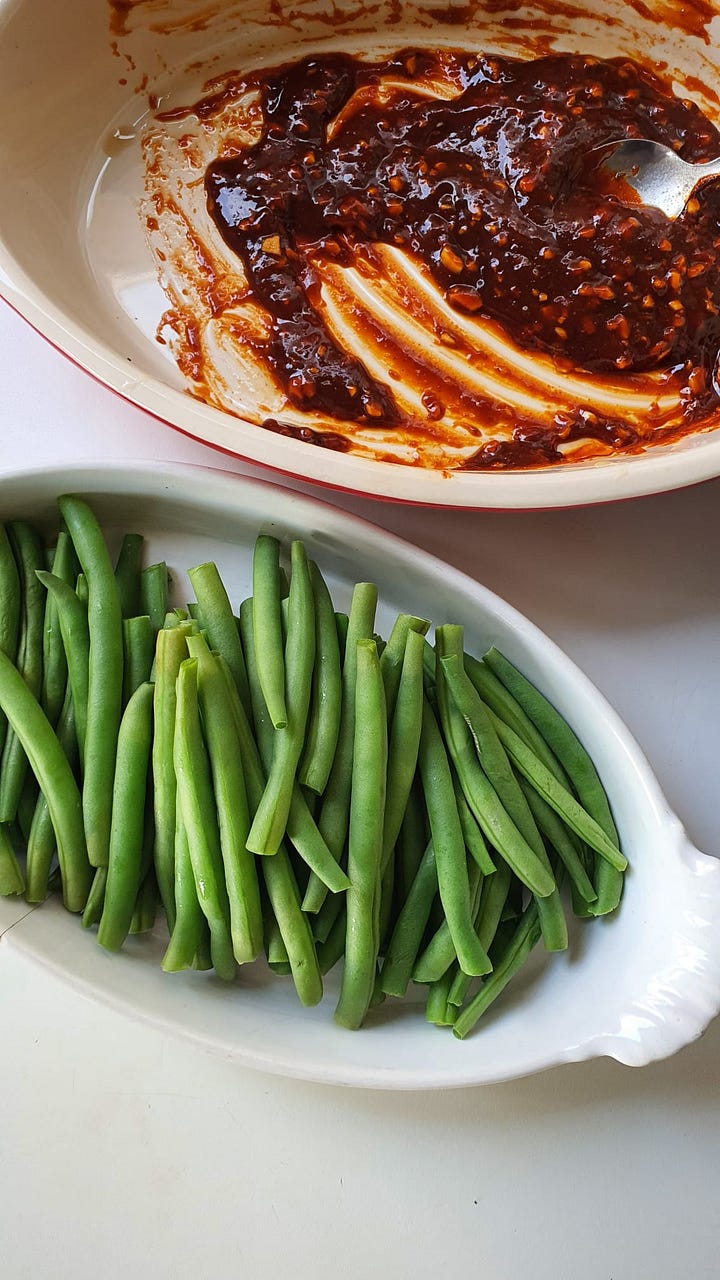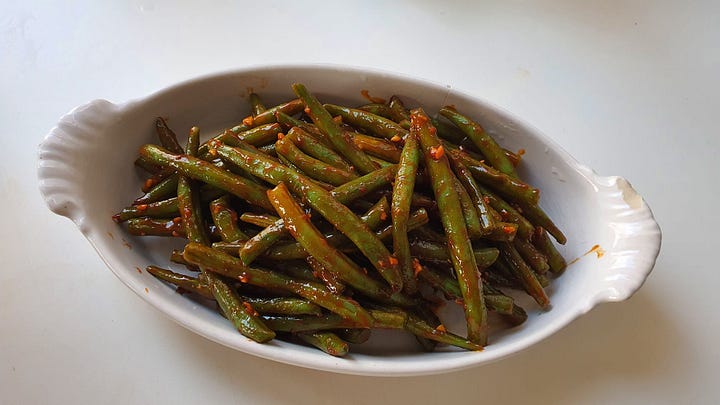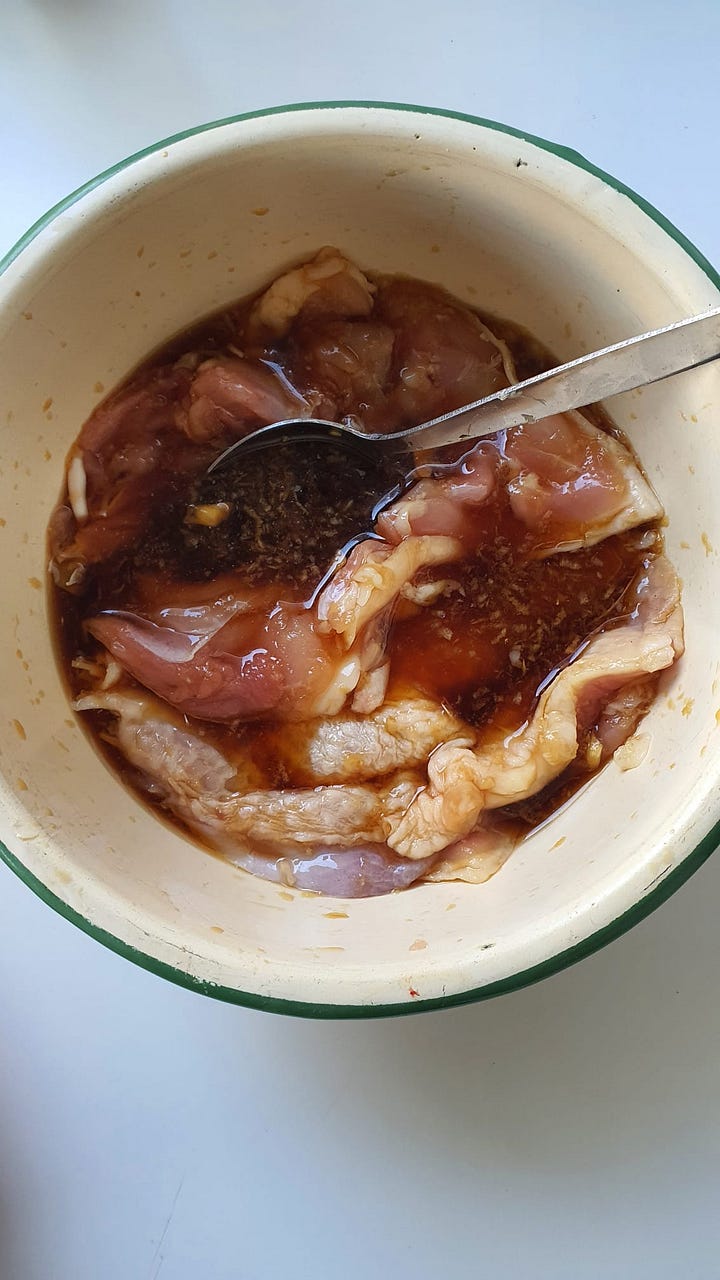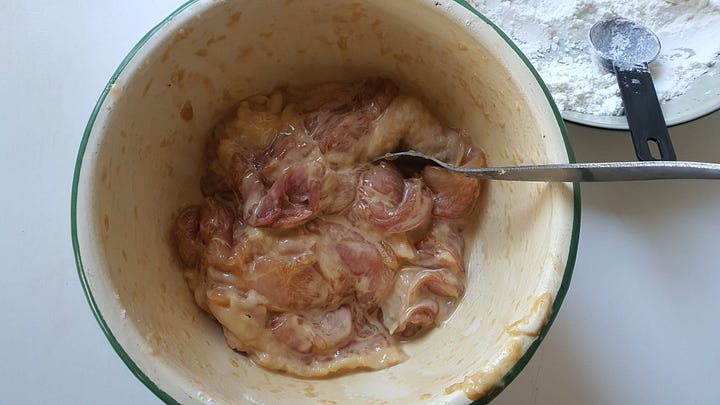As the weather warms and we transition from winter to spring here in the Netherlands, we’ve been enjoying lots of light dinners that don’t weigh us down. Gone are thick, creamy chowders and potato salads, and in their place are Japanese and Korean inspired dinners with piping hot rice, miso soup or doenjang jjigae, and a few accompanying dishes. Two that we’ve especially loved are boiled vegetables tossed with peanut ssamjang and karaage chicken over a bed of shredded lettuce. I have a habit of cooking more than we can finish for dinner so that we’ll have extras to enjoy the next day, and it really pays off with these dishes because the dressed beans keep well and the karaage chicken, like most fried chicken, is even good cold.
Enjoy,
Pamelia
FREE INTERNATIONAL SHIPPING
Explore the rich culinary heritage of Asian vegetarian cuisine with my cookbook Plantasia. With 88 recipes and 24 interviews with cooks across Asia, Plantasia is your guide to elevating your cooking with traditional Asian vegetable wisdom, whether you’re a vegetarian or simply looking to improve your relationship with greens. For a limited time, until April 1, 2025, enjoy free worldwide shipping on your purchase. Use code FREESHIPPING at checkout. Buy the book here.
IN PRAISE OF SSAMJANG
Ssamjang (쌈장) is something I make frequently at home because it is such a flavour bomb and versatile condiment. It’s commercially sold and is typically found in the same section you’d find gochujang (Korean fermented chili paste) and doenjang (Korean fermented soybean paste), but I tend to make my own because it tastes better and takes just five minutes or less. The key components are:
Gochujang
Doenjang
Honey or rice syrup as a sweetener
Chopped garlic, spring onion etc
Sesame oil
Traditionally, you would enjoy it with Korean wraps (ssam 쌈), and this is the way we eat it most often at home — with seared meat (usually pork belly), kimchi, steamed short-grain rice, and fresh lettuce leaves. Occasionally, I’ll stir mayonnaise into it and it transforms into a dip for crudités or fried croquettes.
Once you have ssamjang in your weeknight repertoire, there are endless variations to explore, such as a nutty version with roasted walnuts, or a fruit-forward one with grated apple. Recently, I came across Sunny Lee’s yellow wax beans with peanut ssamjang on Instagram and was inspired to give the first asparagus of the season from Wex’s work a similar treatment. I made ssamjang with natural peanut butter and tossed it through the asparagus, which I simply ran under the tap and microwaved until tender. We found it so satisfying that I bought some green beans the next day and gave them a similar treatment. I imagine that it would be delicious with other vegetables like peas and broccoli.


Green beans with peanut ssamjang
Makes 4 to 6 servings | Vegan
500g trimmed green beans or asparagus
3 garlic cloves, chopped
1 tablespoon gochujang
1½ tablespoons doenjang
1 tablespoon peanut butter
1 tablespoon rice syrup or honey
1 tablespoon sesame oil
Steam, boil, or microwave trimmed green beans or asparagus until they are tender, about 2 to 3 minutes. Meanwhile, in a large bowl, stir together the garlic, gochujang, doenjang, peanut butter, rice syrup or honey, and sesame oil. Toss the beans or asparagus with the ssamjang in the bowl until they are well-coated. Serve.
FRIED CHICKEN, JAPANESE-STYLE
When I lived in Melbourne, I worked for a Japanese cafe for a time and one of the most popular items on the menu was the karaage chicken. It was startlingly straightforward to make — bite-size pieces of chicken thigh were mixed with a soy marinade and allowed to rest for at least a couple of hours before it was coated in potato starch and deep-fried. The result is a craggy crust and deeply savoury and juicy chicken within.
I came across another fried chicken method on the Roy Choi episode of the new Meghan Markle cooking show, where he dipped chicken into tempura batter before dredging them. An Eater video demonstrates a similar method, where flour is added to chicken marinade to provide some “grip” before the chicken is coated in flour. For my karaage, I poured off most of the marinade and mixed the chicken with some tempura flour before dredging it, and it worked great! I hate wasting leftover marinade, so I boiled it and used it to dress the bed of shredded cabbage that the sliced chicken sat on. With a squeeze of lemon, it was all so delicious and I’ll never waste karaage marinade again.


Karaage chicken
Makes 4 servings





